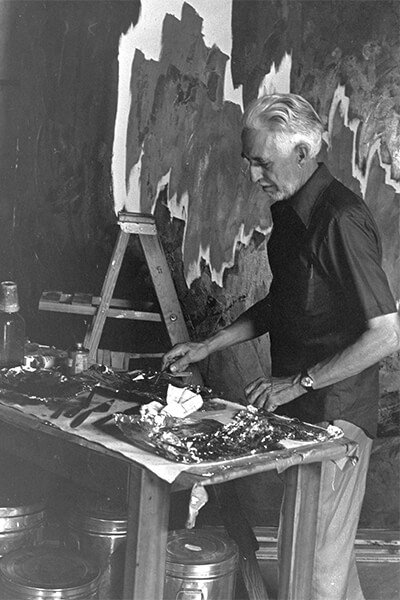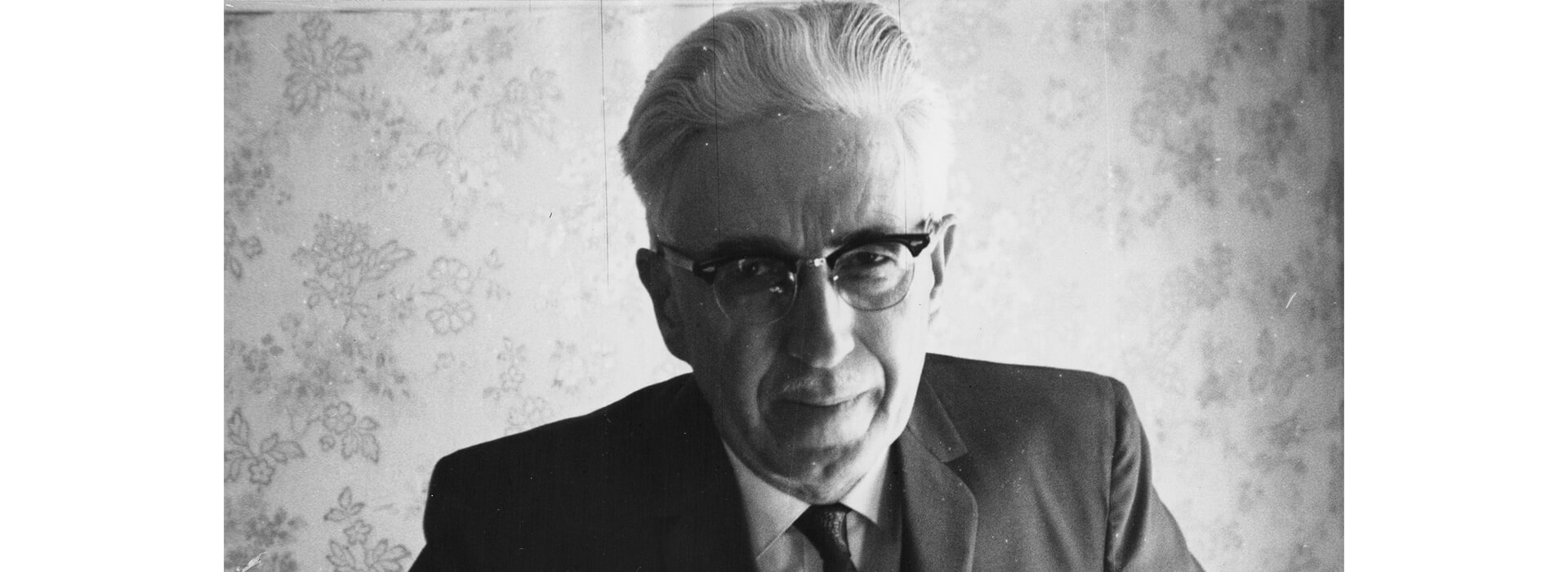Clyfford Still (1904–1980) had a unique artistic vision and was unwilling to compromise it for money or recognition. As he evolved as an artist, Still’s works transitioned from recognizable images and landscapes to more abstract shapes, colors, and lines to express ideas and feelings on huge canvases. He wanted people to get lost in his works and make their own interpretations of his art.
About Clyfford Still
Still was among the first generation of Abstract Expressionists who developed a new, powerful approach to painting in the years immediately following World War II. Still’s contemporaries included Grace Hartigan, Willem de Kooning, Lee Krasner, Norman Lewis, Joan Mitchell, Robert Motherwell, Barnett Newman, Jackson Pollock, and Mark Rothko. Though the styles and approaches of these artists varied considerably, Abstract Expressionism is marked by abstract forms, expressive brushwork, and monumental scale, all of which were used to convey universal themes about creation, life, struggle, and death (“the human condition”).
Described by many as the most anti-traditional of the Abstract Expressionists, Still is credited with laying the groundwork for the movement. Still’s shift from representational painting to abstraction occurred between 1938 and 1942, earlier than his colleagues, who continued to paint in figurative-surrealist styles well into the 1940s.
Born in 1904 in Grandin, North Dakota, Still spent his childhood in Spokane, Washington, and Bow Island in southern Alberta, Canada. Although Abstract Expressionism is identified as a New York movement, Still created his formative works during various teaching posts on the West Coast, first in Washington State and later in San Francisco.
He also taught in Virginia in the early 1940s.
Still visited New York for extended stays in the late 1940s and became associated with the two galleries that launched this new American art to the world: the Art of This Century and Betty Parsons galleries. He lived in New York for most of the 1950s, during the height of the Abstract Expressionism movement.
He became increasingly critical of the art world during this time. In the early 1950s, Still severed ties with commercial galleries and in 1961 moved to Maryland, removing himself further from the art establishment.
In 1979, New York’s Metropolitan Museum of Art organized the largest survey of Still’s art to date and the largest presentation afforded by the institution to the work of a living artist. Following his death, all works that had not entered the public domain were sealed off from both public and scholarly view, closing off access to one of the most significant American painters of the 20th century.
Still remained in Maryland with his second wife, Patricia, until his death in 1980.
Reframing “the Irascibles”
The image taken by Life magazine photojournalist, Nina Leen, has become emblematic of Abstract Expressionism. The photograph includes many of the well-known artists associated with the movement, including Clyfford Still, who were dubbed “the Irascibles” for their public opposition to the Metropolitan Museum of Art’s juried 1950 modern art exhibition and policies on contemporary art.
Noticeably absent from this now iconic image are women (other than Hedda Sterne) and artists of color, who were also working in abstract expressionist idioms at the time. Read more about reframing “the Irascibles” in one of the archives display cases at the Clyfford Still Museum.
Women Who Launched the Movement
Clyfford’s Still’s life and career are marked by associations with many formidable women whose passion for advancing American art and supporting Still’s vision changed the course of art history.
- Grace Morley at SFMOMA (1943) and Jermayne MacAgy, at the California Palace of the Legion of Honor (1947) gave Still his first one-person exhibitions.
- Peggy Guggenheim offered Still his first solo New York exhibition at Art of This Century (1946), a gallery she started in 1942.
- After Guggenheim closed her gallery in 1947, Betty Parsons represented Still along with Jackson Pollock and Mark Rothko. This gallery became the launching pad for the abstract expressionist movement.
- Dorothy Miller curated 15 Americans (1952), a group exhibition at New York’s Museum of Modern Art, which included Still and gave institutional credibility to Abstract Expressionism.
- Still rarely encouraged others to write about his work, but art historian Katherine Kuh penned catalogue essays for Still’s key exhibitions at the Albright-Knox Art Gallery in Buffalo, New York (1966) and New York’s Metropolitan Museum of Art (1979).
Abstract Expressionism
Abstract Expressionism refers to an American art movement that emerged after World War II during the late 1940s and flourished in the 1950s. Although various Abstract Expressionist artists’ paintings may look very different, their work tends to share several key characteristics.

